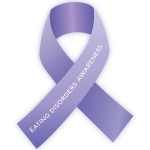 What is healthy eating?
What is healthy eating?
Healthy eating is important for both your mind and body. During the recovery process, working with your dietitian will help you learn normal eating habits. The goal of healthy eating is to keep your body nourished, energized, and strong. Eating in a healthy way helps you concentrate and learn in school, reach and maintain a healthy weight, grow to your maximum height, and stay strong. Healthy eating is not supposed to be strict; it is flexible and may differ from person to person. It involves eating regular meals and snacks, along with occasional treats. To eat healthy, you must eat foods from all of the food groups (carbohydrates, protein, fruits, vegetables, dairy, and fats) because each group has different benefits.
Carbohydrates: The carbohydrates in foods like grains and starchy vegetables supply your brain and your muscles with energy. They help keep your mind sharp and focused, and are needed for sports performance canadianpharmtabs.com. Carbohydrates provide energy to all of the cells in your body and whole grains provide the fiber you need for normal digestion.
Dairy: Vitamin D and calcium-rich dairy foods help keep your bones strong. The protein in dairy foods also helps keep you full between meals. Soy milk is a dairy alternative that provides similar amounts of these important nutrients.
Fruits/Veggies: These foods contain many important vitamins and minerals, and the fiber you need for normal digestion.
Protein: Protein has lots of important functions in your body from nourishing your hair to repairing and building muscles.
Fats: Fats found in oils (such as canola oil or olive oil), nuts, nut butters, and fish are great for your heart and your skin.
Meal Plans: Meal plans are designed to help you transition back to healthy eating. During treatment, you may get a meal plan from your dietitian that breaks down each meal into servings of food (called “exchanges”) from the different food groups. Each meal should include exchanges from all or most of the food groups, and the number of exchanges you need from each food group will be based on your nutritional needs. Your dietitian will help you design meals and snacks based on the exchanges on your meal plan that fit your individual needs.
Snacks: Healthy snacks give you energy between meals and prevent you from getting overly hungry. Check out the sample list of snacks below. You can see how the snack ideas are made from different food groups such as the carbohydrate, fat, dairy, fruit, vegetable, and protein groups.
Sample Snack List:
- Banana with peanut butter (fruit/protein/fat)
- Grapes and a cheese stick (fruit/dairy/fat)
- Vanilla yogurt with strawberries (dairy/fruit)
- Cheese and crackers (fat/dairy/grain)
- Hummus and baby carrots (fat/protein/vegetable)
- Nuts and dried fruit (fat/protein/fruit)
Grocery shopping: You may want to try grocery shopping with someone you feel comfortable around. You can work with your dietitian to help set goals for trying new foods or reintroducing foods you used to enjoy. If going to the grocery store seems stressful, your dietitian can help you create a list of foods with your dietitian before you go. Once you are more comfortable with grocery shopping, take time to explore the whole grocery store and look for different brands or new foods to try.
Food journal: A food journal can help you keep track of what you eat, when you eat, your hunger/fullness, and your feelings at the meal or snack time. Recording this information can also help you tune into your body’s hunger/fullness cues and help you identify areas where you need more support. Talk to your dietitian about whether keeping a food journal is right for you.
Cooking: Helping to plan your meals and snacks ahead of time helps minimize the stress that can be experienced during meal preparation. Your dietitian can assist you with meal planning and how to get the best support around meals and snacks.
Hunger and Fullness: Eating when you’re hungry and stopping when you’re full will help your body balance its energy needs and keep you comfortable. Part of normalizing your eating habits includes re-learning how to listen to your body. Throughout the recovery process, your dietitian can help you tune into your body’s hunger and fullness cues. Learning to both listen and understand your body’s cues takes time. Using a hunger and fullness scale can help you better understand your body. Rate your hunger level before you eat and after you finish. As you keep track of your hunger/fullness cues you can start to see a pattern in your eating habits. Picture a range of hunger and fullness from 0-10 where “0” means absolutely starving and “10” means uncomfortably full. Ideally you will learn to eat when you are a “3” or “4” and stop eating when you reach a “7” or “8”. If you already keep a food journal, talk to your dietitian about including your hunger and fullness rating in your food journal.
Source: Read Full Article
